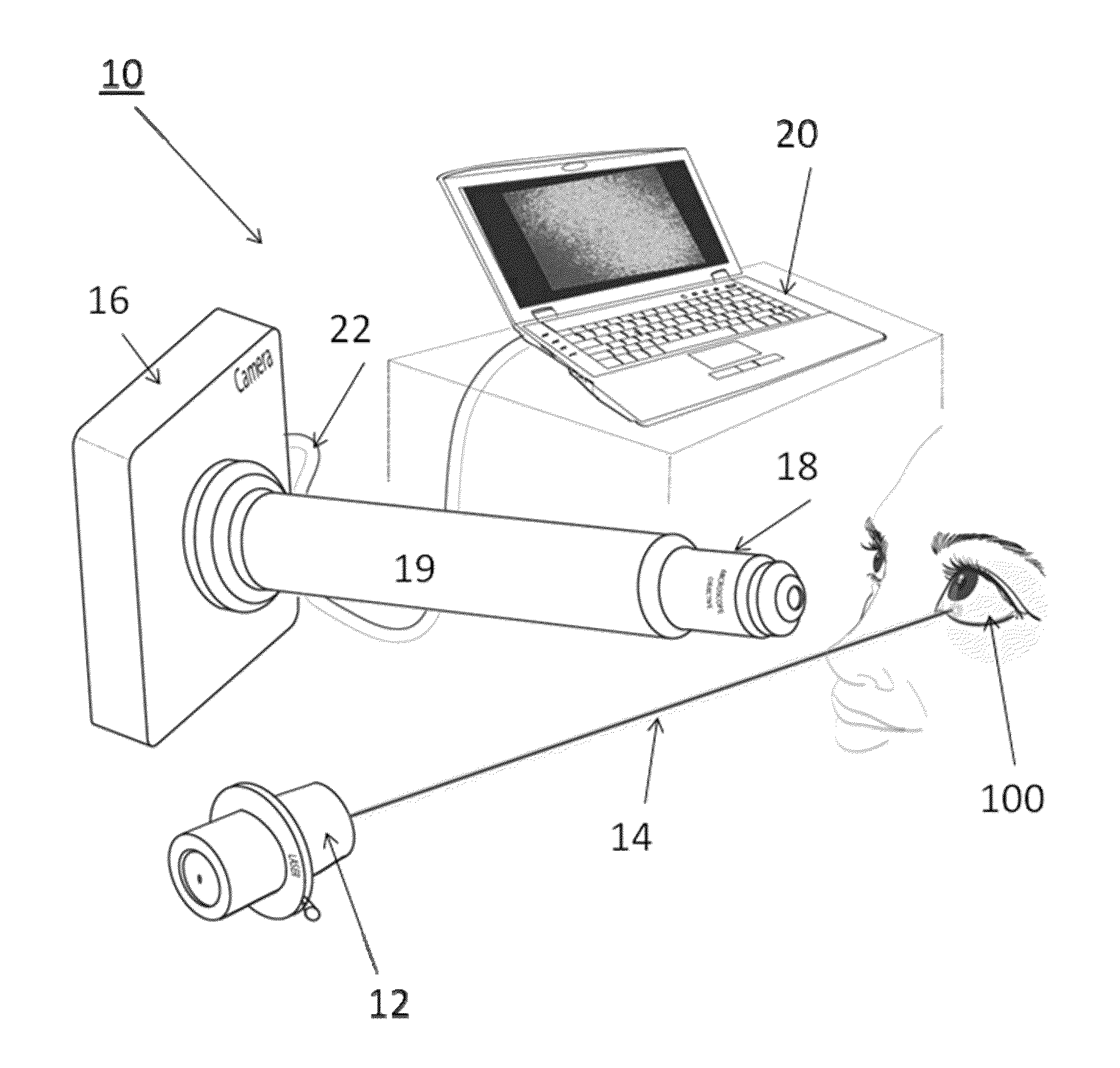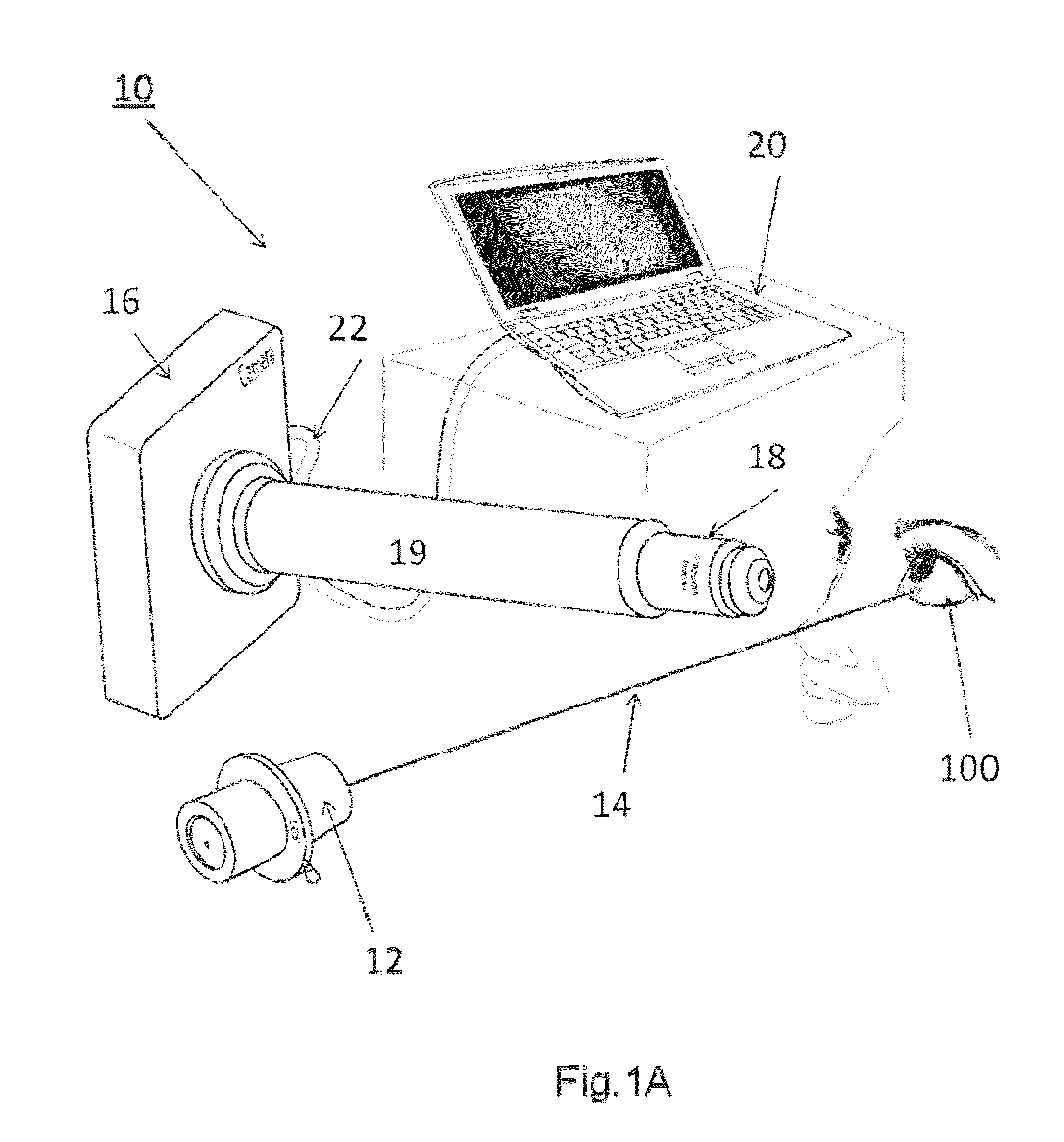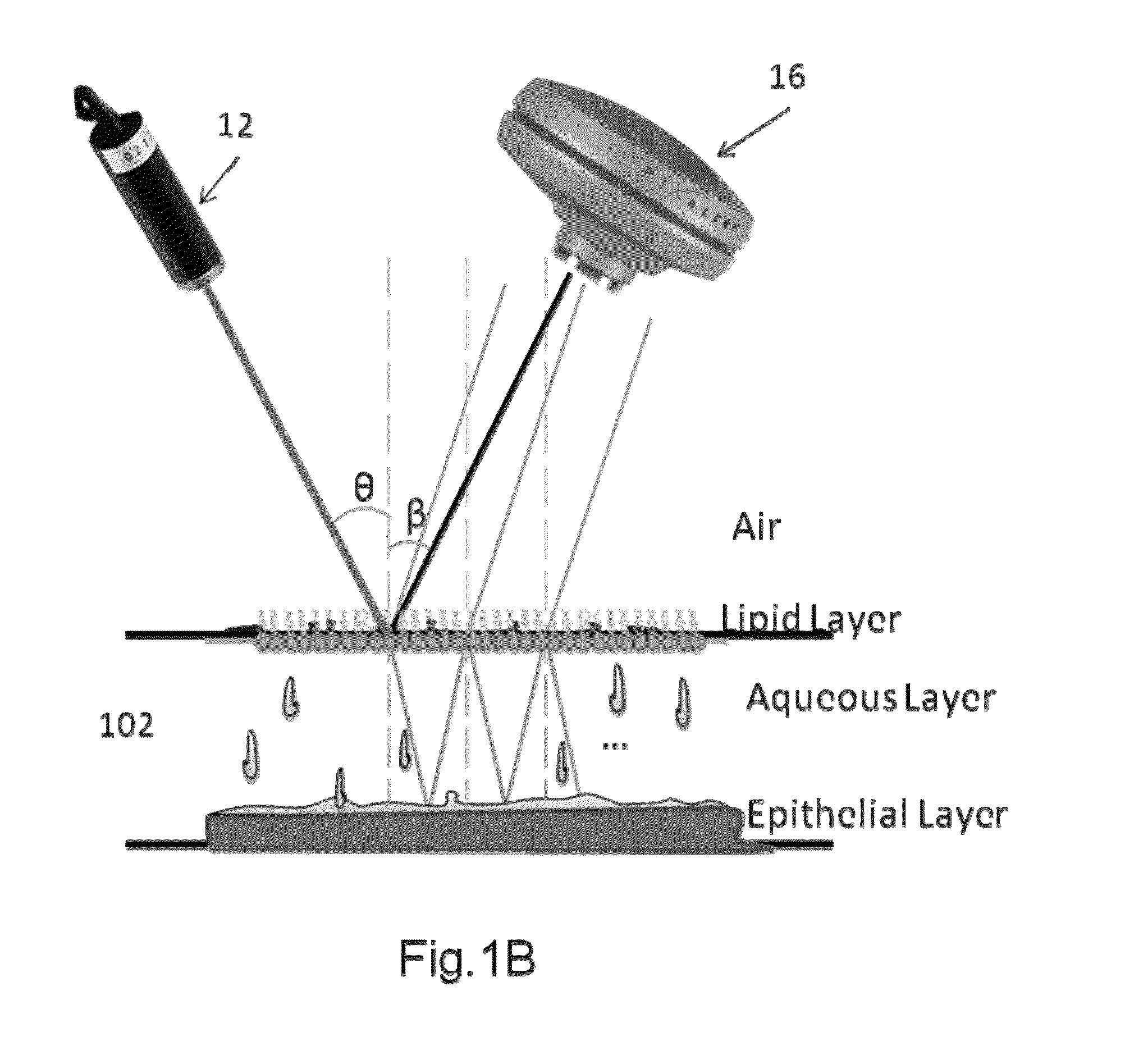Method and device for tear film analysis
a technology of tear film and analysis method, applied in the field of non-invasive methods and devices, can solve the problems of subjective and unquantified information, difficult to analyze the quality and dynamics of tear film, and difficult to align, etc., and achieve the effect of simple structure, convenient alignment and portability
- Summary
- Abstract
- Description
- Claims
- Application Information
AI Technical Summary
Benefits of technology
Problems solved by technology
Method used
Image
Examples
Embodiment Construction
[0030]A schematic of the imaging system 10 is illustrated in FIG. 1A. The imaging system 10 generally includes an illumination source 12 that is used to direct radiation 14 onto the surface of the eye 100. The illumination source 12 may include a laser or light emitting diode (LED). The laser may have a narrow wavelength range or, alternatively, the laser may include a white or broadband wavelength. In the later case, the broader wavelength range can provide additional information on the components and physical features of the tear film. In yet another alternative, two or more lasers (or LEDs) may be used with each laser (or LED) having a different wavelength. Multiple wavelengths would provide additional information on the components of the tear film.
[0031]As another alternative, a monochromatic LED may be used. The LED as a light source would remove the speckles. With a monochromatic LED, one would only need to analyze the interference pattern. In still another alternative, a broa...
PUM
 Login to View More
Login to View More Abstract
Description
Claims
Application Information
 Login to View More
Login to View More - R&D
- Intellectual Property
- Life Sciences
- Materials
- Tech Scout
- Unparalleled Data Quality
- Higher Quality Content
- 60% Fewer Hallucinations
Browse by: Latest US Patents, China's latest patents, Technical Efficacy Thesaurus, Application Domain, Technology Topic, Popular Technical Reports.
© 2025 PatSnap. All rights reserved.Legal|Privacy policy|Modern Slavery Act Transparency Statement|Sitemap|About US| Contact US: help@patsnap.com



